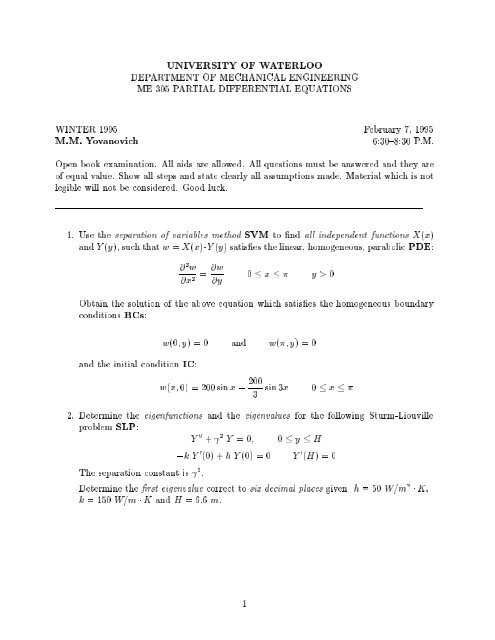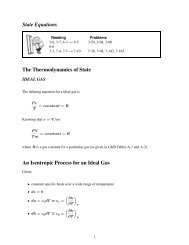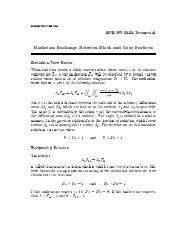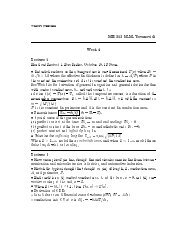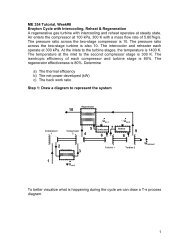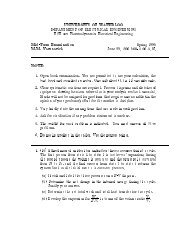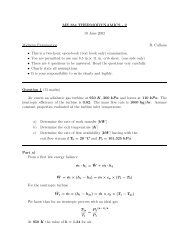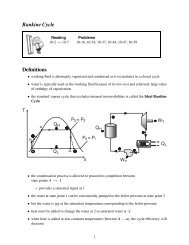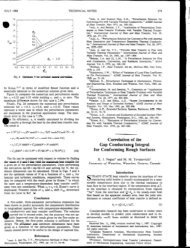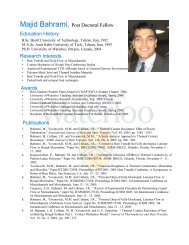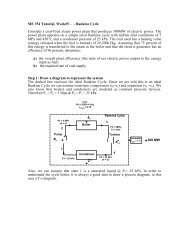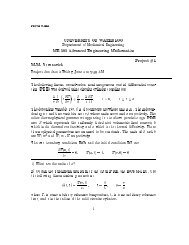UNIVERSITY OF WATERLOO M.M. Yovanovich
UNIVERSITY OF WATERLOO M.M. Yovanovich
UNIVERSITY OF WATERLOO M.M. Yovanovich
Create successful ePaper yourself
Turn your PDF publications into a flip-book with our unique Google optimized e-Paper software.
<strong>UNIVERSITY</strong> <strong>OF</strong> <strong>WATERLOO</strong>DEPARTMENT <strong>OF</strong> MECHANICAL ENGINEERINGME 305 PARTIAL DIFFERENTIAL EQUATIONSWINTER 1995 February 7, 1995M.M. <strong>Yovanovich</strong>6:30{8:30 P.M.Open book examination. All aids are allowed. All questions must be answered and they areof equal value. Show all steps and state clearly all assumptions made. Material which is notlegible will not be considered. Good luck.1. Use the separation of variables method SVM to nd all independent functions X(x)and Y (y), such that w = X(x)Y (y) satises the linear, homogeneous, parabolic PDE:@ 2 w@x 2= @w@y0 x y>0Obtain the solution of the above equation which satises the homogeneous boundaryconditions BCs:and the initial condition IC:w(0;y)=0 and w(;y) =0w(x; 0) = 200 sin x , 2003sin 3x 0 x 2. Determine the eigenfunctions and the eigenvalues for the following Sturm-Liouvilleproblem SLP:Y 00 + 2 Y =0; 0 y HThe separation constant is 2 .,k Y 0 (0) + hY(0) = 0 Y 0 (H) =0Determine the rst eigenvalue correct to six decimal places given h =50W=m 2 K;k = 150 W=m K and H =6:6 m:1
3. The following linear, non-homogeneous, second-order, partial dierential equation PDEwas obtained by the application of Newton's second law: P Forces = massaccelerationto a exible, elastic wire of length L, linear mass density which is taut and xed atboth ends: x = 0 and x = L. The motion takes place in a vertical plane parallel tothe y , axis.@@x!T @y, g , k @y@x @t + F cos !t = y@2 @t 2 t>0 0 x LThe rst term on the left-hand side of the PDE represents the net vertical force actingon an element of the wire and the tension T in the wire is assumed to be constant.The second term represents the body force due to gravitational acceleration g.The third term represents the viscous damping force per unit length of wire due to airresistance which is proportional to the wire velocity @y=@t and the parameter k is apositive constant.The fourth term is the forcing function due to some external periodic force per unitlength of the wire.The units of some of the the geometric and physical parameters are: T [N], [kg=m],y [m], x [m], and t [s]. The mass density is constant.(a) What are the units of each term of the above general equation?(b) What are the units of the parameters: g;k;F;!?(c) Obtain the equation for the steady-state case: y(x) =f(x), i.e. when @y =@t0; @2 y= 0 and there is no external force acting on the wire, i.e. when F =0.@t 2(d) Find the solution y(x) and obtain the relation between y max and the physical andgeometric parameters: ; T; g; L.2


